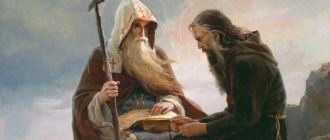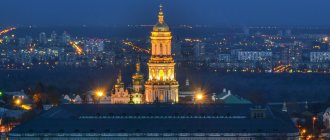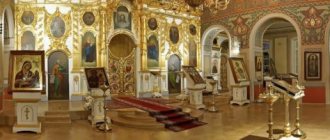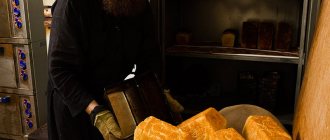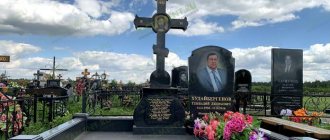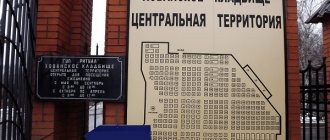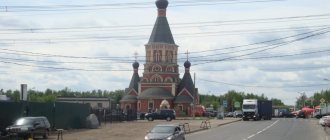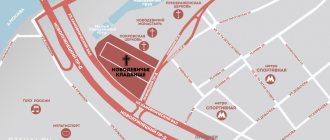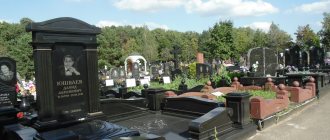For many centuries now, the “prayed” shrines of the Lavra, possessing miraculous powers, give hope and strength to the suffering, heal the sick and poor. This is one of the most unique places on earth, where phenomena occur that are not yet accessible to the human mind. For Orthodox Christians, the Kiev Pechersk Lavra has, perhaps, the same significance as the Vatican for Catholics or Mecca for Muslims. It is here, on the steep bank of the Dnieper, near the relics of famous saints, many of whom directly took part in the formation of the Russian state, that you clearly feel involved in the history of your country. Despite the fact that now this sacred place has become the territory of another state...
Holy Vikings
In the very center of ancient Kyiv, a crowd is noisy. Warriors, close associates of the prince, ordinary townspeople and, of course, priests - servants of the ancient Russian gods - Perun and Veles. People surrounded a strong wooden house and angrily shouted something to the owner standing in the doorway, but did not dare to approach. They know too well what he is capable of with a sword in his hands.
The owner of the house, Tur, himself comes from the Vikings, or, as they were then called, Varangians - stern warriors from the cold shores of the Baltic Sea. Accustomed to fighting since childhood, they did not value their own lives in battle, terrifying their enemies with their desperation. And now, no matter how angry the besiegers were, no one dared to approach the entrance to the house.
And the reason for their rage is that the prince’s warrior and skilled warrior did not even go against the prince... Against the gods!
Of course, recently more and more Christians have begun to appear among the residents of Kyiv; even the grandmother of the current Prince Vladimir, Princess Olga, was a Christian. And the prince’s brother, they say, also believed in Christ. But now the pagan faith, which had been weakened, is gaining strength again! Prince Vladimir himself had a hand in this. On his orders, an idol of the supreme god Perun was erected in the center of the city, and the priests started talking about old traditions: it was time to truly appease the gods and sacrifice a person to them.
The chronicle has preserved to this day the story of that event: “And the elders and boyars said: “We will cast lots on the youths and maidens; on whomever it falls, we will slaughter him as a sacrifice to the gods.”
The lot fell to the son of the prince's warrior, the Varangian Tur. Everyone expected that he would not oppose such a decision. The Varangians especially reverence the gods; their gods, Thor and Odin, are warlike and merciless. The same is required of everyone who worships them. Therefore, no Varangian will refuse such an honor - to sacrifice his heir if the gods demand it...
But when he heard that his son, John, had been given the lot, Tur just laughed:
- These are not gods, but a tree. Today it exists, but tomorrow it will rot. There is only one God. He created the heavens and the earth, the stars, the moon and the sun. He also created man and destined him to live on earth. What did these gods do? They themselves are created. I will not give my son to demons.
What a news! Is the fearless Varangian warrior really a Christian? Of course, he lived for a long time in Byzantium, served there in the army of the emperor, where many Varangians converted to Christianity... But somehow I still can’t believe it. Although there is no reason to be surprised: after all, Tur adopted a new, Christian name - Theodore, and even baptized his son with the Christian name John.
Martyrdom of Saints Theodore Varangian and his son John
The crowd goes to storm. Once, twice... But the father with a sword in his hands does not allow the attackers to approach his son. Who here said that Christianity is the faith of weaklings? Theodore decided to sacrifice himself: either protect his son, or die with him. And in a fair fight it was not easy for him to defeat even the crowd.
I had to use a trick... Theodore's house stood on pillars. The enemies cut them down, and the house collapsed, burying two Varangians - father and son, who became the first Christian martyrs of Rus'.
Where was the Kiev prince Vladimir at that time? Nothing is known about this. But the heroic death of his faithful warrior, who did not hand over his son to be torn to pieces by the priests, probably shocked the prince. More and more often, the prince began to think about choosing a different faith, about refusing bloody sacrifices. However, another ten years passed before this choice was made. Prince Vladimir himself was baptized, and then he personally cut down the idol of Perun, throwing it into the Dnieper. At the site of the death of Theodore and John, as a sign of repentance, he built the first church in Kyiv, called Tithes...
At the beginning of the twentieth century, excavations were carried out in the city center. Kyiv was destroyed many times, the city burned - from the time of Prince Vladimir, almost nothing even of stone buildings has survived. The Church of the Tithes also disappeared. But archaeologists found the destroyed foundation of that simple wooden house on pillars preserved.
Maybe it's a coincidence, or maybe something more. After all, the relics of his owners, the Viking saints Theodore and John, also rest to this day in the caves of the Kyiv Lavra.
Holy Equal-to-the-Apostles Prince Vladimir
About divine services
At the hotel at 5:30 am the ringing bell will wake you up so that you do not oversleep for the early Liturgy. But, of course, if you plan to sleep longer, then no one will drag you “by the collar” to the temple. In the Lavra there are usually from 2 to 7 (I have never seen such a number in any monastery!) liturgies in different churches (beginning from 5:30 to 9:00). On Sunday there are even 2 all-night vigils held in different cathedrals (I’ve never seen anything like that either). Confession is usually performed both during the evening service and at the Liturgy. But, only in the morning, confession begins 30 minutes before the reading of the clock. I was very impressed by the all-night vigil on Sunday in the Assumption Cathedral, the largest cathedral of the Lavra. Two choirs sang, antiphonally, alternately, from under the dome itself. Very solemn and beautiful. After the service, everyone could help in cleaning the temple :).
I was also very impressed by the early Liturgy in the caves, that is, in the underground cave church. There are generally 6 cave churches in the Lavra. This is probably how the ancient Christians prayed, in the catacombs. I lost count of how many above-ground temples there are in the Lavra.
Prayers are also held (you need to check the schedule). In the Church of the Life-Giving Spring, prayer services are performed with the putting on of the St. Saint’s hat. Mark the grave-digger, the same one who raised the dead.
Anthony - the father of Russian monasticism
Several more decades passed. And now Kyiv is making noise on the banks of the Dnieper. Now it is the capital of Rus', one of the largest and most powerful cities in Europe. Very little time has passed since the day when Prince Vladimir cut down the idol of Perun, but how much has changed!
There are no more bloody sacrifices, but the first Christian churches are being built. And here’s an amazing thing: following the new faith, learned people came from Byzantium, bringing writing to Rus', and then architects, icon painters... Not only church art - even simple crafts began to develop much faster.
The city has changed literally before our eyes. More and more often you can see overseas guests who have come to see the new Kyiv. But among the crowd of visiting Greeks there is a Slavic monk. By all appearances, he’s local. I just got very tanned in the southern sun.
And indeed, monk Anthony was born even north of Kyiv, in the town of Lyubech. And I got so tanned because I traveled a lot in southern countries. Even in his youth, he went to Palestine to see the places of the earthly life of Jesus Christ. And then, returning back, he stopped at a Greek monastery on Mount Athos, took monastic vows there and wanted to stay forever. But an experienced monk, his spiritual mentor, ordered Anthony to return to his homeland.
There are already a lot of monks on Mount Athos; monastic life is in full swing. But in Rus' there are still almost no monasteries. It was there that Anthony had to work hard.
He did not stay in noisy Kyiv, but he did not stray far from the capital. He chose a hill as a place for his solitude and monastic feat, where the Kiev Pechersk Lavra founded by him still stands... But the solitude did not work out.
Venerable Anthony of Pechersk
Although Anthony did not invite anyone with him, people came to him on their own. When there were twelve of them, the first church was built. Then they created a monastery. True, Anthony did not want to be its abbot; he asked to choose someone else from the brothers. And later, when there were more monks, he tried to retire again. He went to a nearby hill and dug a new cave. But only there, students began to settle around him again...
Surprisingly, today among the many saints whose relics rest in the Lavra, its founder and father of all Russian monasticism, Anthony, is not there. Having dreamed of solitude all his life, the monk was finally able to get it only after his death. Feeling that his time was near, Anthony gathered his brothers, said goodbye to them and asked them not to expose his relics for veneration.
Then he went into his cell - and the earth crumbled behind him, completely blocking the passage.
Although everyone knows approximately where the cell was located, even in our time, persistent archaeologists have not been able to excavate it and disturb the holy founder of the Lavra.
Where to eat
There are several refectories on the territory of the Lavra. The food is delicious (small note: I’m not picky about food, so I can’t speak for everyone). If you are fasting, you can ask what is fasting to eat, they will tell you. The most delicious thing I tried there was the “Anthill” cake, not at all lean, but I don’t think I’ve ever eaten a more delicious cake anywhere else.
The cost of one meal, consisting of the 1st, 2nd dish, side dish, salad, dessert and tea varies between 80–90 hryvnia. Accordingly, if you moderate your appetite, you can keep it to 50. A small inconvenience: all refectories close at 19:00, that is, before the end of the evening service. So, you need to choose, either eat before the service, which is inconvenient, or stock up on food to eat later in your room.
Miracles every day
On Easter morning, the monk Dionysius, who was watching the monastery caves, entered one of the most remote ones. The deceased inhabitants of the monastery were buried here, which is why the place was called the Community.
- Fathers and brothers, Christ is risen! “Today is a Great Day,” Dionysius said loudly.
- Christ has truly risen! — a friendly chorus of thunderous voices suddenly rang out from the graves.
So who said that monks are all gloomy and gloomy people? So, even in their death they know how to enjoy life. And there are many such examples in the ancient book dedicated to the Kyiv monks - the Kiev-Pechersk Patericon. After all, living in solitude and wearing poor clothes does not mean dooming yourself to continuous sorrow...
The Monk Prokhor received the nickname Lebednik from the brothers of the monastery, because he ate nothing but quinoa cakes, which he prepared for himself. The brothers were surprised: quinoa is impossible to eat! She's bitter! But Father Prokhor collected it himself, crushed it into flour himself, and prepared his own cakes.
The brothers admired how he suffered for the sake of faith and fasting. But after a few years, famine began, there was not enough wheat flour for everyone, and Father Prokhor began to treat others with his flatbreads. It was then that it turned out that they were... sweet and very tasty! How so? What is the secret? Several cunning brothers quietly took some of the cakes, consider it stolen. We hoped to get to know their composition better, but it didn’t work out. The stolen cakes, as befits a swan, turned out to be as bitter as wormwood.
Miracle? Or maybe it's a coincidence again? One thing the brothers understood is that this whole story is not accidental. They repented to Father Prokhor, he forgave the unlucky thieves and treated them to the same flatbreads that they brought back to him. And again they seemed delicious as never before. Without the bitter aftertaste of a bad deed.
Where to stay
There are 3 hotels in Lavra today (May 2021). Reservations must be made by telephone in advance. Here is information about hotels and telephone numbers for booking: https://lavra.ua/where_to_stay/. As I already said, it’s closer to the hotels from the street stop. Citadelnaya. From here you can see the gates leading to the Lower Lavra. You need to go into them and go down the cobblestone slope to the Church in the name of the icon of the Mother of God, Joy of All Who Sorrow. After passing it, turn right. The hotels are located in buildings 54, 56 and 58. I lived in the one in building 54, directly opposite the above church. There are rooms for 2‑, 3‑, and 4‑beds. The 1st floor is for men, the 2nd is for women, I don’t remember the 3rd. :) Cost for 1 day per person: in a 3- and 4-bed room - 130 hryvnia, in a 2-bed room - 150 hryvnia. The room has only everything you need: beds and bedside tables, hangers, table, kettle, cups. Clean, comfortable. On the floor there is a toilet (several stalls, located at the end of the corridor) and a shower room (also several stalls but in a separate room from the toilet). There are no problems with hot water. If you need a refrigerator, you need to contact the administrator, he will give you the key to the room where there is a refrigerator. In the 56th building, as far as I understand, the conditions are a little worse. And in the 58th there are superior rooms, if anyone needs them. Reservations are made for no more than 3 days. No reservations can be made for longer periods. What this is connected with is not clear. But after check-in, you can ask to extend the period.
The whole truth about Ilya Muromets
It is not appropriate for a monk to stand out from the crowd and boast about his achievements: that is why they were given simple, identical clothes. At the monastery service, everyone stands side by side, like soldiers during a parade; in the twilight of the temple it is difficult to distinguish one from the other. Only one stands out from the crowd, but there's nothing you can do about it. A head taller than everyone else, huge and strong, like the epic heroes, and he is a former hero who left military service and became a monk. Ilya, nicknamed Chobotok. They say that once his enemies caught him while he was putting on his boots, and he was able to defend himself from their swords with just one boot. Either he is from distant Murom, or from Morovsk, near Chernigov, which is much closer to Kyiv... It is not known exactly, but another nickname stuck to him over time - Muromets.
Ilya Muromets
Once he fought gloriously - his whole body was covered in wounds. But there was never anger or bloodlust in him. In his old age, he preferred the humble service of a monk to the glory of a great warrior and military ranks. Now he has a new battlefield - his own soul...
Nowadays, we know little about the real life of the great hero. One thing is certain: during his lifetime he was famous not only for his military exploits, but also for his monastic virtues - humility, prayer. It is not for nothing that after his death they began to venerate him as God’s saint, and a little later he was canonized as St. Elijah of Pechersk, or Elijah of Muromets.
In the godless Soviet years, they tried once again not to mention the fact that the epic hero had a real prototype, whose relics are kept in the Kiev Pechersk Lavra. But it was then that scientific research began, which made it possible to confirm church tradition.
Reconstruction of appearance, examination of intravital wounds, complex analyzes to determine the age of the relics... All this confirmed: indeed, the Monk Elijah of Murom lived in the 11th-12th centuries, indeed, he was taller than all his contemporaries - 177 centimeters. You wouldn’t be surprised by such a height now, but at that time the average height was no more than 165 cm. And Elijah’s physique was very powerful.
Moreover, as they say in the epics, Elijah really could not walk for a long time - he suffered from leg diseases. But then he glorified himself in battles, as evidenced by numerous wounds. The Monk Elijah is depicted on the icon as a monk leaning on a sword. A warrior-hero who became a warrior of the spirit.
From the monastery to the museum and back
After the revolution, the monastery was abolished. During the war and post-war times, the monastery operated again, but in 1961 it was closed again and transformed into a museum-reserve, a center of atheistic propaganda. In the museum halls there were open tombs with relics, and lecturers convinced visitors that there was nothing sacred or supernatural in the relics, that this was a means of priestly deception, and they were incorrupt only because the Lavra caves were laid in dry limestone rocks, where the temperature is constant in winter and summer and air humidity. But among local residents and believers there were still legends about how, when applied to the icon, relics, or even just praying near them, people received healing from various ailments and help in solving many life problems. At the end of the 80s of the last century, the Far and Near Caves were returned to the monastery; The Theological Seminary reopened. Since 1992, the Lavra has housed a cathedral (in the former refectory church of Anthony and Theodosius of Pechersk) and the residence of the Primate of the Ukrainian Orthodox Church - Metropolitan of Kyiv and All Ukraine. The territory of the Upper Lavra still remains under the jurisdiction of the museum-reserve, and only on the most significant holidays here, in the Cathedral Lavra Church, the main shrine of which is the miraculous icon of the Dormition of the Mother of God, are services allowed.
